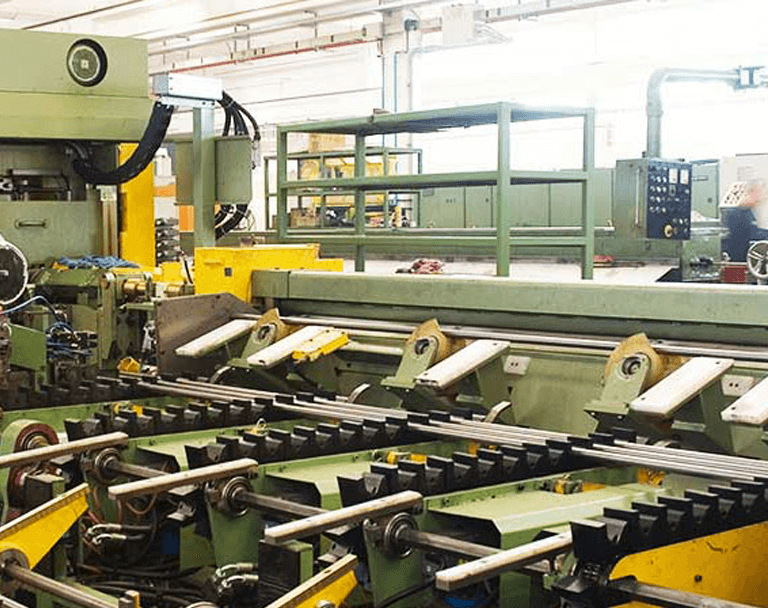Grinding is used in enterprises where production is carried out, in constructions and similar areas. For mass production, it is necessary to get support from the machines. It is facilitated to use machine power instead of manpower by using grinding machines.
What is Grinding?
Grinding is a process performed in the last step of production. It is used for the final touches of the product produced. Errors and protrusions created during operations such as chip removal are eliminated by grinding. The grinding freeze machine is from the CNC group. It is suitable for all sizes and shapes of parts. Since it is performed in order to finalize the product, it is a process that should be done with precision and care. There are many usage areas in our country.
The Significance of the Grinding Process
Grinding is the final stage and determines the shape of the product. It should be done by professional people with the help of professional equipment. It is used in many areas as one of the CNC machines that have a lot of space in the production sector.
Products with different properties such as iron, sheet metal, hard stones are cut in industry and construction with grinding. It is a highly functional equipment. The area of use is very wide. It is necessary to use it by paying attention to the precautions. Cutting is solid with hard cutting stones at the end. It ensures that the transactions are completed as soon as possible. It is seen as an indispensable tool in the construction sector. It is the safest way to separate hard parts on dangerous products that are difficult to cut.
Grinding Usage Areas
The grinding process should be carried out with authorized craftsmen. Grinding equipment is mostly used in the construction sector. It is possible to cut all parts in a short time and easily. It is used in all product groups from hardwood products to sheet metal products. It is often used in building constructions and manufacturing areas. Being careful and attentive is important both for the appearance of the product and for human health.
Performing sensitive measurements on work equipment is one of the main reasons for grinding. In addition, grinding is quite common for reasons such as cleaning the surfaces of solidified vehicles, eliminating surface defects, and providing a shiny surface. Surfaces are intended to be qualified.
Plane Grinding Type
It is the grinding method applied for grinding plane-shaped surfaces. Steady state is provided with the table, which is a part magnet, during the stone turning. Vacuum table can also be preferred instead of magnetic table. It is possible to obtain a glassy surface according to the stone quality and material status.
External/Cylindrical Grinding
It is a method for correcting the outer surfaces of parts with a cylindrical shape. The cleanest grinding of all cylindrical structures can be carried out.
Internal/Hole Grinding
The inner or hole grinding method is the opposite of cylindrical grinding. Grinding is applied to the inner surface. The shape of the stone and the shape of the cylinder, cone, etc. It can be applied to the hole geometry for the figures. In addition, there are methods such as gear grinding and edge grinding in grinding. With these methods, the characteristic direction is obtained.
Grinding-Specific Features
High precision is required ingrinding works. Surface quality is intended to be high during grinding work. It is a technologically advanced equipment. Many manufacturers have developed the first production grinding machines used at the beginning in terms of functionality. Classic control designs used on lathes are invalid for grinding. They have been improved on the basis of numerical control. Different solutions are needed in control benches. Gradual progression enhancement, oscillation, etc. Its features are technically advanced.
Advantages of Grinding
Improvement is provided in the surface quality of the grinded places. It is a powerful bench in technical terms. It allows even hard parts to be cleaned. It offers an effective solution for difficult sawdust shielding materials. There is a fairly high level of chip volume. It is noteworthy for its high volume in special method grinders and rigid countertops. Ease of precise measurement adjustment is available.
It is often preferred thanks to itsgrinding advantages.

| Standard | Roughness | ||||
|---|---|---|---|---|---|
| mm > | 2,000 | 3,000 | 15,000 | 40,000 | 80,000 |
| mm | 3,000 | 15,000 | 40,000 | 80,000 | 100,000 |
| IT6 | ≤ 0,35 μ | ≤ 0,40 μ | ≤ 0,50 μ | ≤ 0,80 μ | ≤ 1,00 μ |
| IT7 | ≤ 0,40 μ | ≤ 0,50 μ | ≤ 1,00 μ | ≤ 1,25 μ | ≤ 1,50 μ |
| IT8 | ≤ 0,50 μ | ≤ 0,80 μ | ≤ 1,25 μ | ≤ 1,50 μ | ≤ 2,00 μ |
| IT9 | ≤ 0,80 μ | ≤ 1,25 μ | ≤ 1,50 μ | ≤ 2,00 μ | ≤ 2,50 μ |
| IT10 | ≤ 1,25 μ | ≤ 2,00 μ | ≤ 2,50 μ | ≤ 3,00 μ | ≤ 4,00 μ |
| IT11 | ≤ 2,00 μ | ≤ 3,00 μ | ≤ 4,00 μ | ≤ 5,00 μ | ≤ 6,00 μ |
| Interval | Tolerans | Length |
|---|---|---|
| 2,000mm ÷ 7,500mm | IT 6 – 7 – 8 – 9 – 10 – 11 | 2,000mm ÷ 4,000m |
| 8,000mm ÷ 11,500mm | IT 6 – 7 – 8 – 9 – 10 – 11 | 2,000mm ÷ 6,000m |
| 12,000mm ÷ 100,000mm | IT 5 – 6 – 7 – 8 – 9 – 10 – 11 | 2,000mm ÷ 7,000m |
